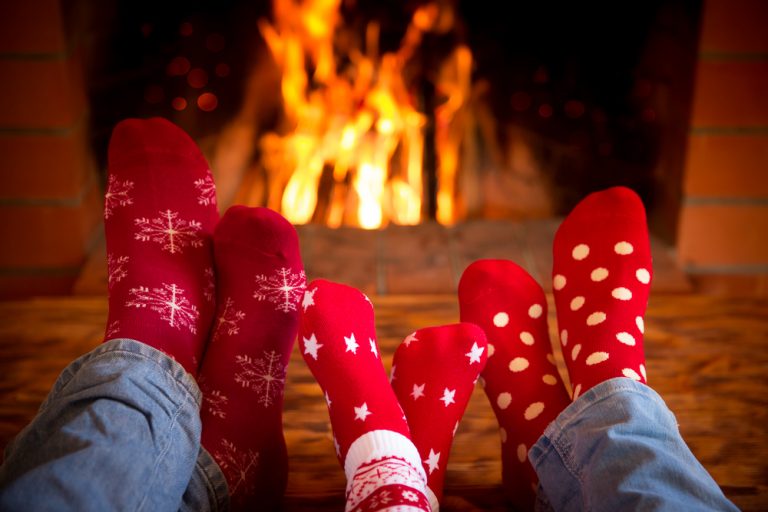Winter Energy Savings Tips
The holidays are the time of year when our spending can sneak up on us, as everything from Black Friday and Cyber Monday to other holiday-based expenses cause us to shell out more than we should. And the reality of the situation is that just as much spending goes on outside of the house as it does inside in efforts to make it through the cold season. The more you can save at home, the more money you’ll be able to put away or reallocate to gifts for your loved ones. This holiday season, we want you to save as much as possible with these helpful winter savings tips.
Here are 7 Ways to Save Energy This Winter
Table of Contents
1. Keep your HVAC System Running
You may think that turning your heat off during the day when no one is home is saving you money, but in reality it could be more taxing on your system. The constant starting and stopping of your HVAC system costs you more in energy and wear than it gets you in savings.
It is better to change your thermostat based on the activity levels in your home. If no one is home during the day, turn your heat back 8 degrees lower than your comfortable setting. If you have a programmable thermostat, you can have your device start to increase the temperature before you arrive so that by the time you’re back home, the climate is back to a desirable level.
2. Use your ceiling fan – even in the winter.
If you have a ceiling fan in your home, it could give you more control over your home’s ventilation during the colder times of the year. Have your fan rotate clockwise during the fall and winter months, as this will act in a manner opposite to the standard process of a fan. Instead of pushing cooler air down, it redistributes warm air that typically rises in the room back downward. This simple changeup could save you up to 15% on your heating costs.
If there are certain rooms in your house that are not in use daily (guest room, basements, storage areas), refrain from closing off the vents in those rooms in an effort to redistribute the heat throughout to the rooms in your home that are in use. It can cause unnecessary strain and damage to your duct so even if it’s not in use, leave it open.
3. Put your dollars saved toward insulation.
Your home may not be using heat as efficiently as possible due to areas between windows or doors allowing warm air to escape. Over time, age and the effects of the elements can contribute to this, undermining the heating and cooling that is done within the home. Foam weatherstrips are an inexpensive way to save money on your energy bill overall.
Especially if your home is already equipped with them, be sure to check them progressively over time. When it comes time to replace them, there are a number of varieties of weatherstrips. The cheapest kind and one of the easiest to install is the peel-and-stick form. The only caveat is that they don’t last quite as long and the type of door or window you have will determine the kind of weatherstripping you will require.
4. Clean Your Furnace.
Of the things in your home that require regular cleaning, the furnace is among those that can benefit in a number of ways from consistent maintenance, as regular cleanings ensure that the furnace is able to operate optimally.
Beyond that, cleaning your furnace and providing it with regular checkups act as precautionary measures that will allow for the early identification of any problems. This enables issues to be easily addressed, which can help to prevent significant spending down the road. Keeping the parts of your furnace clean can even improve their longevity and help to keep your heating device in working condition for a longer period of time.
5. Get a Humidifier.
During the stretches in which your home is feeling colder, an alternative to relying on your heater is to utilize a humidifier. Humidifiers work by adding moisture to dry air. This, in turn, warms the air and can have a number of health benefits such as lessening the effects of cold symptoms.
Humidifiers come in two main types, warm mist, and cool mist, and their purchase is based on personal preference, but other features of the device should be based on your home. The larger the room you are planning on putting your humidifier in, the larger the size machine you should purchase. Along with their reduced energy consumption, humidifiers can come with a number of features like timers that allow them to be turned off after so long so even if you forget to power them down, they will do so themselves to further conserve energy.
6. LED Holiday Lighting.
In addition to its frigid temperature, winter is also known as the holiday season. As people host events for friends and family and attempt to get into the holiday spirit, many will enlist the assistance of holiday lights.
The type of lights used in the task can play a big role in the amount of energy consumed, as traditional incandescents are not nearly as efficient as the newer LED holiday lights. Another startling difference between LED and incandescent lights are the lifespans of the two. In comparison, LEDs can last over 30 times as long and are able to keep from releasing the bulk of their energy as heat, as is the case with incandescents. Switching up your lighting is one of the easiest winter energy savings tips.
7. Turn Down The Water Heater.
To save money at home, one common practice is to adjust the water heater, which represents one of the most expensive appliances. During the winter, in the event that you or your family are planning on visiting loved ones or going on a brief vacation, use this opportunity to further turn down the water heater.
The water heater temperature does not have to be decreased drastically, but the difference will allow you to reduce the effort that the heater needs to exert, which will, in turn, save energy. Just be sure to remember to turn it back on when you return home in order to restore your water heating capabilities.
What are you doing to save energy in the winter?
What our customers are saying
See why our power customers say we're the best electricity provider in Texas!
I was worried about getting electricity for my home through a prepaid company. I was calling around to see different rates then going through all the hassle of credit checks while dropping points each…
I have been with this company for several years and have been very happy since. Even when I moved, they made my usually stressful situation very easy and carefree. I recommend them to everyone that I…
I have enjoyed the service for 2 years now. In the beginning this service was planned to be temporary but with the service being so effective for me i decided to keep it for the long haul. I’m a happy customer.





